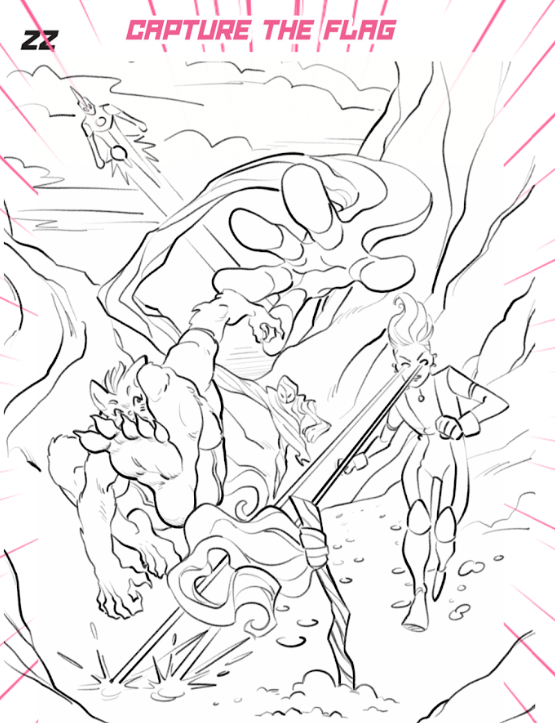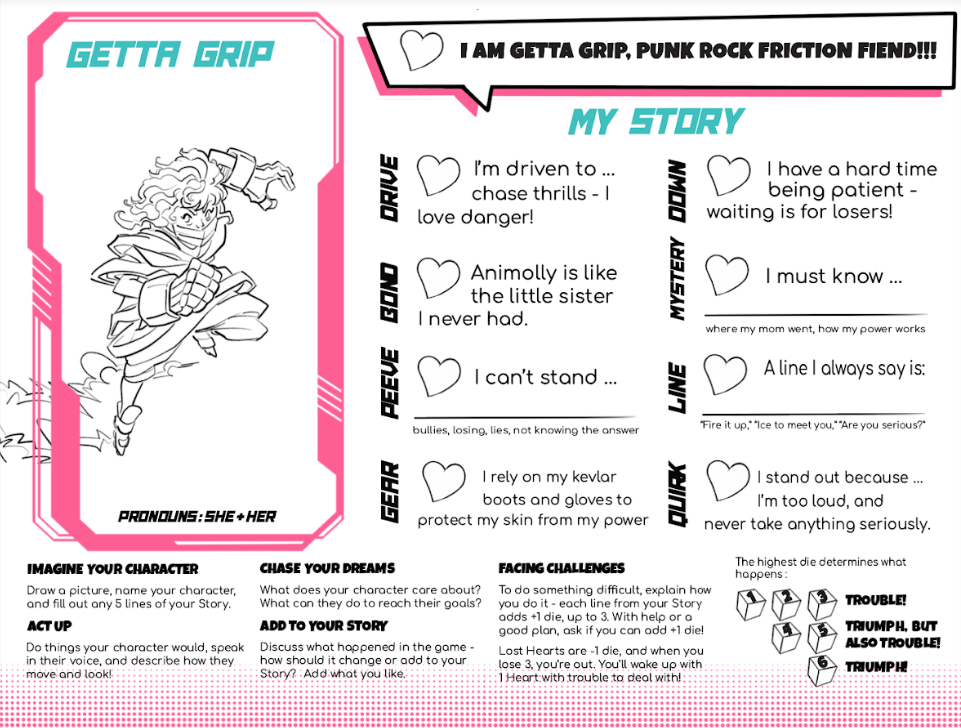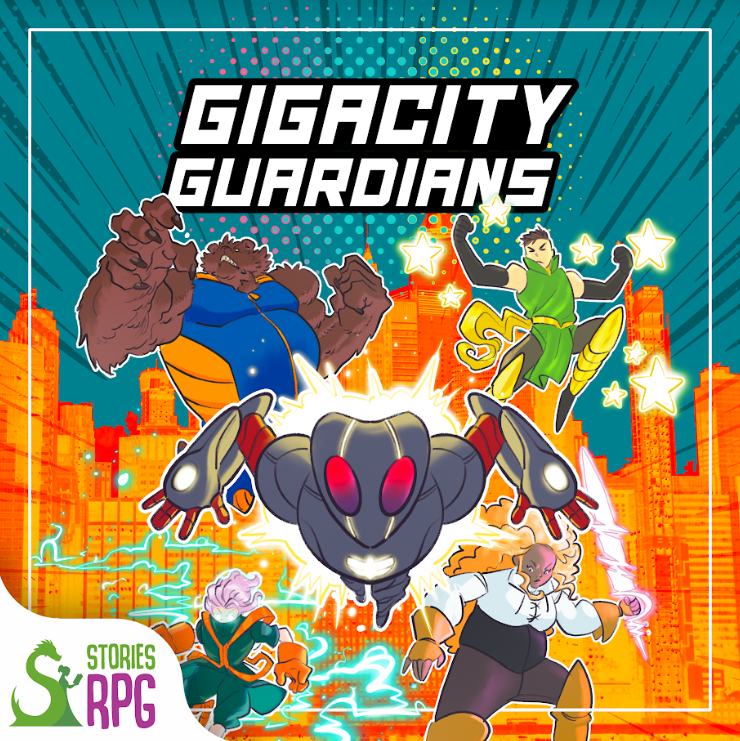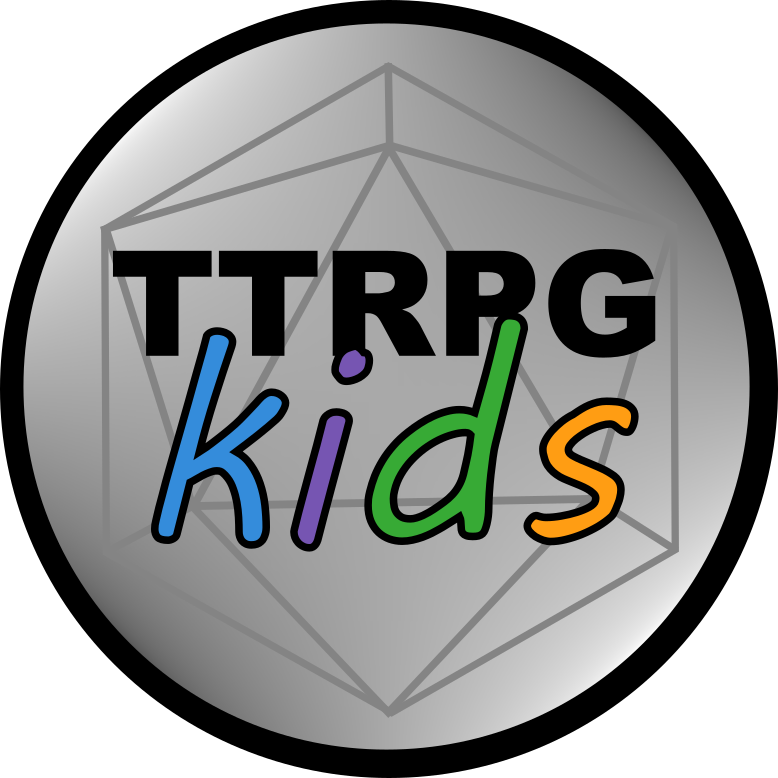Review of Gigacity Guardians, a superhero TTRPG for all ages!
Jump to:
Gigacity Guardians is a TTRPG for heroes of all ages

Gigacity Guardians focuses on story elements and creative conflict resolution while still giving options for fights and using epic powers so players have a choice in how they want to handle situations, but there’s still a lean towards non-combat options. For mechanics, players need to be able to use their character sheet, which requires a little bit of reading or some help from a grown up or older kid, and to be able to recognize and compare numbers on a 6-sided die.
For the story and themes… as the parent of a 4yo who has a passion for superheroes, this was GREAT. It’s bright and fun and engaging in a way that my kid was able to connect with and has a range that can facilitate superhero themed stories that vibe with him (similar to Spidey Amazing Friends), older kids (similar to the different Teen Titans shows), and beyond (like Justice League or X-Men movies).
Gigacity Guardians is set in a city of superpowers and super challenges
Gigacity Guardians takes place in a metropolis city full of challenges for our metahuman heroes and at Signora Sun’s Sanctuary where metahumans live and learn to use their abilities. You can also spread the story to cover other locations and world-level events (especially if using some of the optional rules for bigger encounters) to achieve the scale that you need for your game.
Within the city, players will encounter challenges ranging from metahuman antagonists to friction with those who don’t have powers to major city threatening events! At the Sanctuary, players will develop their skills and grow together with their found family as they navigate this world as a team. Both locations give an excellent balance of action and character development options and provide a platform to tackle discussions about discrimination, conflict resolution, and more.
Your character in Gigacity Guardians
Gigacity Guardians is built on the Stories RPG system, which emphasizes character story as part of the mechanics while still keeping your character sheet manageable for all-ages.
To create your character, you specify elements that are core to WHO they are (like their drive and bond) before you specify WHAT they are (like their quirk or power and their gear). When playing, you use both of these as part of your rolls and bonuses so you’re constantly looking back at WHO your character is.
Characters in Gigacity Guardians are also very easy to track – you have 8 story points about your character, and…. That’s it! There’s no extra numbers and stats to pick, just those story points.
When playing with my kid (4yo), this was GREAT. He’s still learning to read, so he needs help when it comes to reading his character sheet, but, because these are all story points, he remembered them because it was core to his character. It’s easier for him to remember that his character likes to do exciting things and can’t stand loud noises than it is for him to try to remember something like getting a +3 modifier to stunts and a +1 modifier to speed, even if he can’t read all the story points on the sheet.

Dice pools and epic action in Gigacity Guardians
3d6 system from Stories RPG
Like I mentioned before, this game uses the 3d6 dice pool mechanic from Stories RPG. In this system, you get 1d6 to attempt an action, and past that you can earn up to 2d6 more (for a total of 3d6) as long as you can get help from friends or can explain how your character’s story points will help you with your idea.
Once you’ve determined your dice pool, you roll all of your dice and use the highest one to see what happens in the story. So, if you roll 3d6 and get a 1, 3 and 6, you’ll only use the 6 as your result.
This is perfect for accessibility to players who aren’t strong in math since there’s no adding modifiers or combining dice rolls, and it focuses on strategizing and story building. In almost every action that you do, odds are you can find a way to explain how your team is working together or you’re using your abilities to get to the full 3d6 dice pool, and that’s great! It gets everyone at the table working on the story together for a clear bonus in the game that, while weighted towards success, still has a chance to give some interesting and different results.
Optional rules for epic encounters
Superhero stories often include an massive world-changing or city-threatening event at some point. Maybe there’s a giant robot from space that’s trying to clear away the city to make a landing pad for another, even bigger, robot… maybe a kaiju has awoken and is trying to nest in the center of the city… Maybe a metahuman has accidentally summoned a giant, now uncontrollable, storm that is going to tear the city apart… there’s SO MANY options with this!
To combat these epic challenges, Gigacity Guardians includes a set of optional rules that add a bit more nuance and complication beyond the core Stories RPG 3d6 pool to allow for characters to combine their powers and go through some absolutely epic action sequences to get that big finale type event! They aren’t necessary to run the game if your players aren’t up for the increase in rules or this scale (they truly are optional), but wow do they give an avenue for a massive encounter!
What did my kid think about Gigacity Guardians?
My kid (4yo) said (paraphrased a bit for clarity):
I got to be a Spiderman! PHEW PHEW PHEW (making web shooter gestures)
I like the superhero school and want to go there, and we got the bullies to stop. They weren’t nice and I got to tell them to protect the kid.

I thought his response was so cool!! He does love Spiderman, and he was able to play as his own version of Spiderman who had a combination of aspects from the Miles Morales, Gwen Stacy, and Peter Parker Spideys from the Spidey Amazing Friends show. He wore his Spidey jacket the whole time and had an absolute blast!
Also, it is 100% worth noting is that he did really love the Sanctuary and asked a ton of questions about superheroes going to school like he does (really important for getting him excited about kindergarten) AND we had a good talk about how to handle bullies and what discrimination was when some of the Gigacity anti-metahumans crowd started pushing a metahuman kid around in one of the first encounters. We talked about different options, and, when he eventually decided that he wanted to shield the kid with a web and then signal for help from Signora Sun and team, he wanted to see what he could still do afterwards to help the kid and to stop more bullies. It was a really good way to talk about some tough topics and have them take on meaning that he could internalize.
Overall thoughts on Gigacity Guardians
This game is so cool on so many levels: superheroes, a fun atmosphere, focus on stories and non-violence but still giving options, accessible mechanics, emphasizing positive themes, and so much more… and that doesn’t even get into the fact that it comes with a parallel story in podcast form! We had a lot of fun with Gigacity Guardians, and I am really glad we got to try this out and run some engaging stories together.
Find a copy of Gigacity Guardians
You can find a copy of Gigacity Guardians on the Stories RPG Patreon!
Also, check out these other features from Stories RPG and Michael Low’s other works:
Review of Starsworn and Stories RPG
Featured Project: Gigacity Guardians
How to Teach With Games: collaboration article with Michael Low

If you liked this post, make sure to subscribe to the TTRPGkids monthly newsletter to stay up to date on the latest reviews, tips and tricks, game and podcast list updates, and more! Thank you for playing tabletop RPGs with your kids and sharing this awesome hobby with the next generation!
